Intrumentation
Our group is equipped with state-of-the-art instrumentation in the centimeter (microwave) spectral region. All of our instruments are specially outfitted for transient species investigations. The group currently operates three Fourier transform spectrometers in the centimeter band, two of them with chirped-pulse capacity and one in a buffer gas cell.
Cavity-based Fourier transform microwave spectrometer
The most efficient method for identifying new molecules in our laboratory begins with two very sensitive fully automated Fourier transform molecular beam cavity spectrometers, both possessing electrical discharge and heated nozzle sources.
Cavity spectrometer
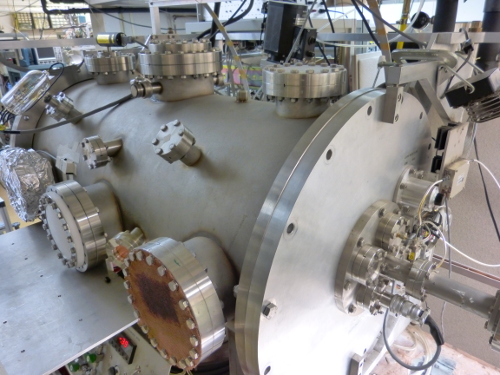
Our first cavity spectrometer was constructed in 1996 and has undergone significant incremental improvements in the intervening years. This spectrometer possesses a very sensitive microwave receiver that can be cooled together with the large confocal mirrors of the spectrometer to the temperature of liquid nitrogen. Its operating range is 5-43 GHz, however the frequency range can be readily extended into the millimeter band by the technique of double resonance. In double resonance, radiation from a tunable millimeter-wave source is crossed with our molecular beam, while the connecting centimeter-wave transition is monitored directly with the FT cavity spectrometer. The only constraint is that there must be connecting transitions in the millimeter band that have reasonable line strengths. The utility of this technique was recently demonstrated by the assignment of 15 lines of SiCSi in the 60−186 GHz range, following an initial measurement of 7 transitions between 6.7 and 42.7 GHz in the centimeter band. With the recent acquisition of amplifier/multipilier chains in the 90−220 GHz range (in addition to existing active frequency multipliers between 30 and 90 GHz), double resonance measurements can be made up to 220 GHz with no gaps in the frequency coverage.
Find more about the instrument:
Supersonic-jet cryogenic-resonator coaxially oriented beam-resonator arrangement Fourier transform microwave spectrometer. J. U. Grabow, E. S. Palmer, M. C. McCarthy, and P. Thaddeus. Review of Scientif Instruments 76, 093106 (2005)
Microwave spectra of 11 polyyne carbon chains carbides. M. C. McCarthy, W. Chen, M. J. Travers, and P. Thaddeus. The Astrophysical Journal Supplement Series 129, 611-623 (2000)
Broadband and cavity spectrometer
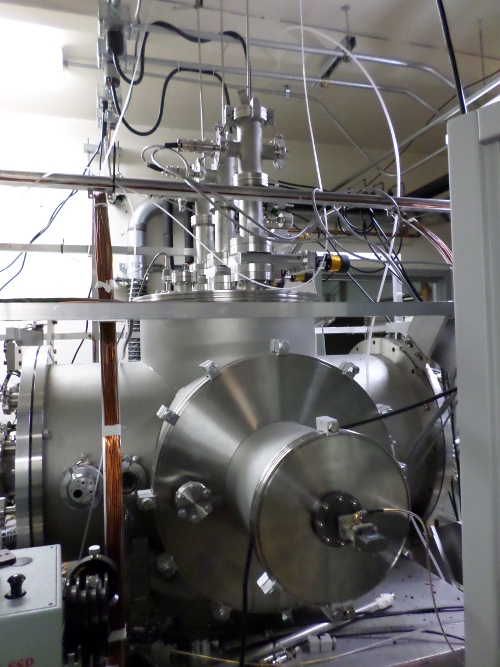
Our second FT microwave spectrometer is essentially identical to the first one, but operates between 5 and 26 GHz and possesses a laser ablation source for production of metal-bearing molecules, with continuum Minilite or Surelite Nd:YAG lasers used as light sources.
The chamber is also equipped with a sensitive chirped FT microwave spectrometer in a perpendicular arrangement to the cavity spectrometer. It operates between 8 and 18 GHz, and two new bands (2-8 GHz and 18-26 GHz) will soon come on-line. This spectrometer is equipped with some of the fastest commercially available digital electronics, including a high-speed digital oscilloscope (20 GHz hardware bandwidth, 100 GS/sec sampling rate; Textronix) and an arbitrary waveform generator (12 GS/sec, 24 GS/sec with interleaving; Textronix). Power amplification of the frequency chirp is accomplished using electronic attenuators and several high-power TWT amplifiers (2-8 GHz and 7.5-18 GHz, 200 W; 18-26 GHz, 40 W; Applied Systems Engineering). To increase detection sensitivity, three identical discharge nozzles are used in parallel, and each gas pulse is probed by up to ten microwave pulses using the so-called ‘fastframe’ technology; the combination of the two allows us to achieve a factor of ten increase in sensitivity compared to the first-generation version of this spectrometer.
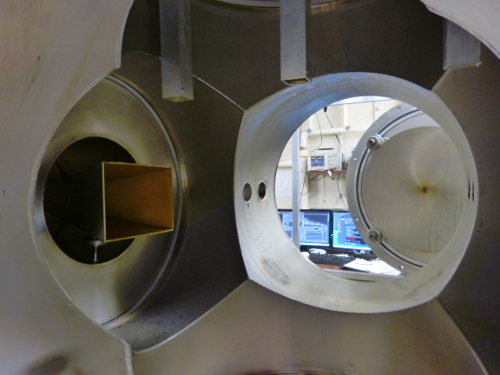
Find more about the instrument:
Microwave spectral taxonomy: A semi-automated combination of chirped-pulse and cavity Fourier-transform microwave spectroscopy. K. N. Crabtree, M. A. Martin-Drumel, G. G. Brown, S. A. Gaster, T. M. Hall, and M. C. McCarthy. The Journal of Chemical Physics 144, 124201 (2016)
Acquisition software
Both of our spectrometers are equipped with state-of-the-art control software, both powerful and flexible, written by Dr. Kyle Crabtree using Qt, an open-source, across-platform application framework that is frequently used for developing application software with a graphical user interface.
The cavity software allows batch acquisitions or automated scans covering many hundreds of MHz or requiring many hours of integration to be conducted with little or no oversight. Calibration of a batch or survey is performed by routinely monitoring the intensity of a spectral line. Using computer-controllable hardware, it is also possible to automatically optimize intensities of individual lines.
The broadband software allows to stream individual FIDs from the digital oscilloscope in real time and co-averages well in excess of 10 M gas pulses are routine.
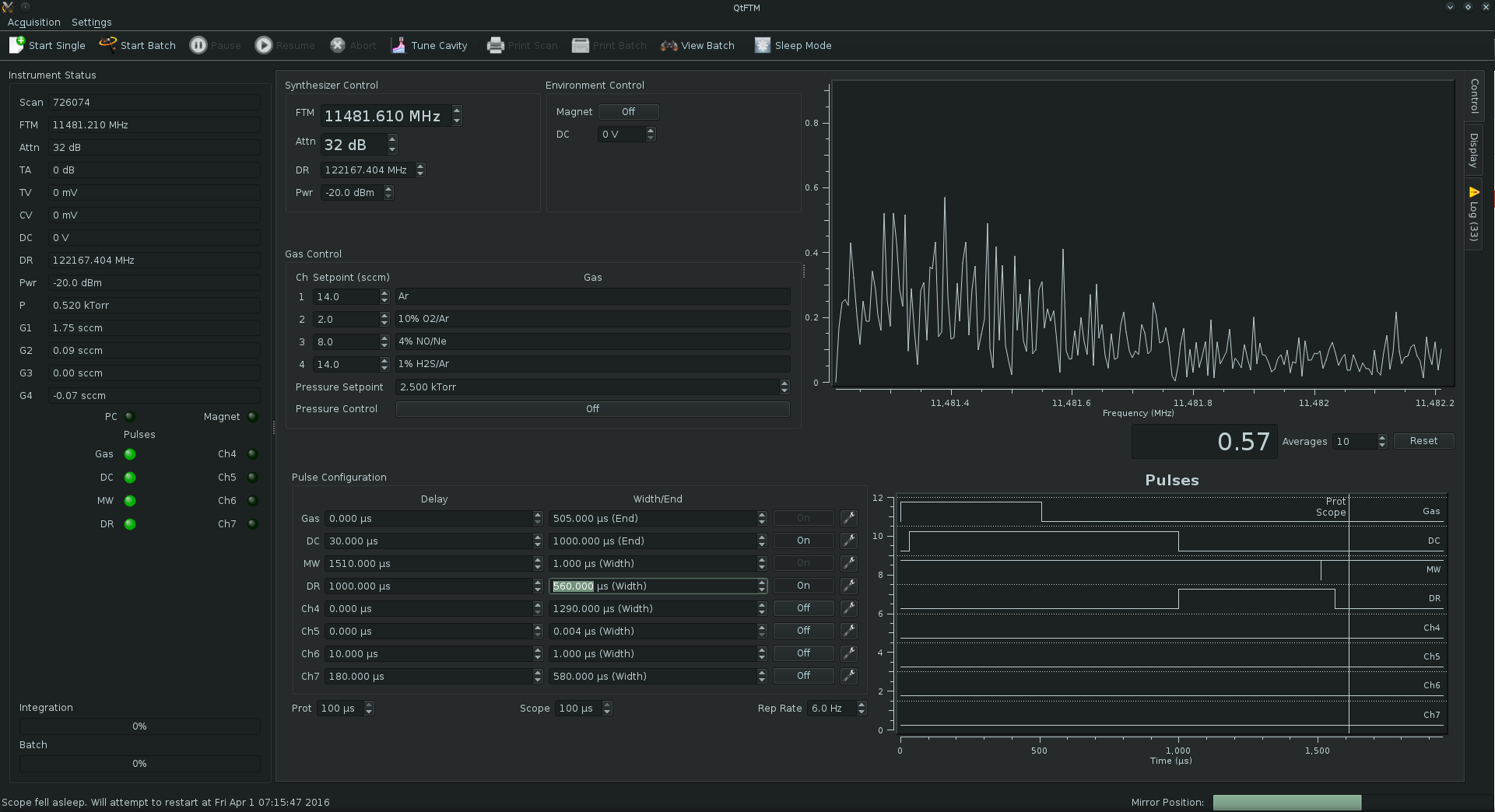
[Clic on the image to enlarge]
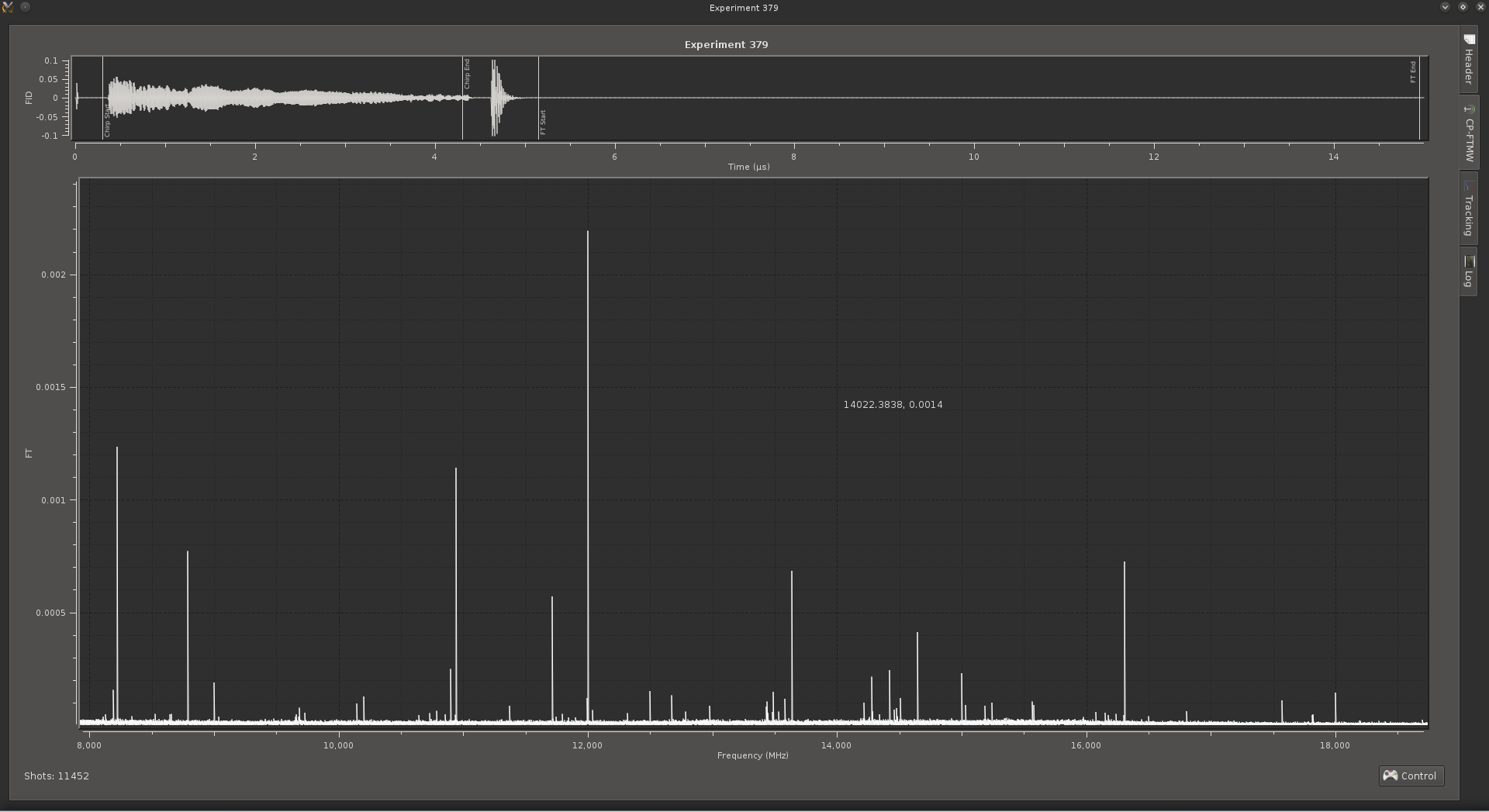
Example of a DR spectrum where the pump line (whose intensity is monitored) is visible in the top and the DR survey is plotted in the bottom.
[Clic on the image to enlarge]
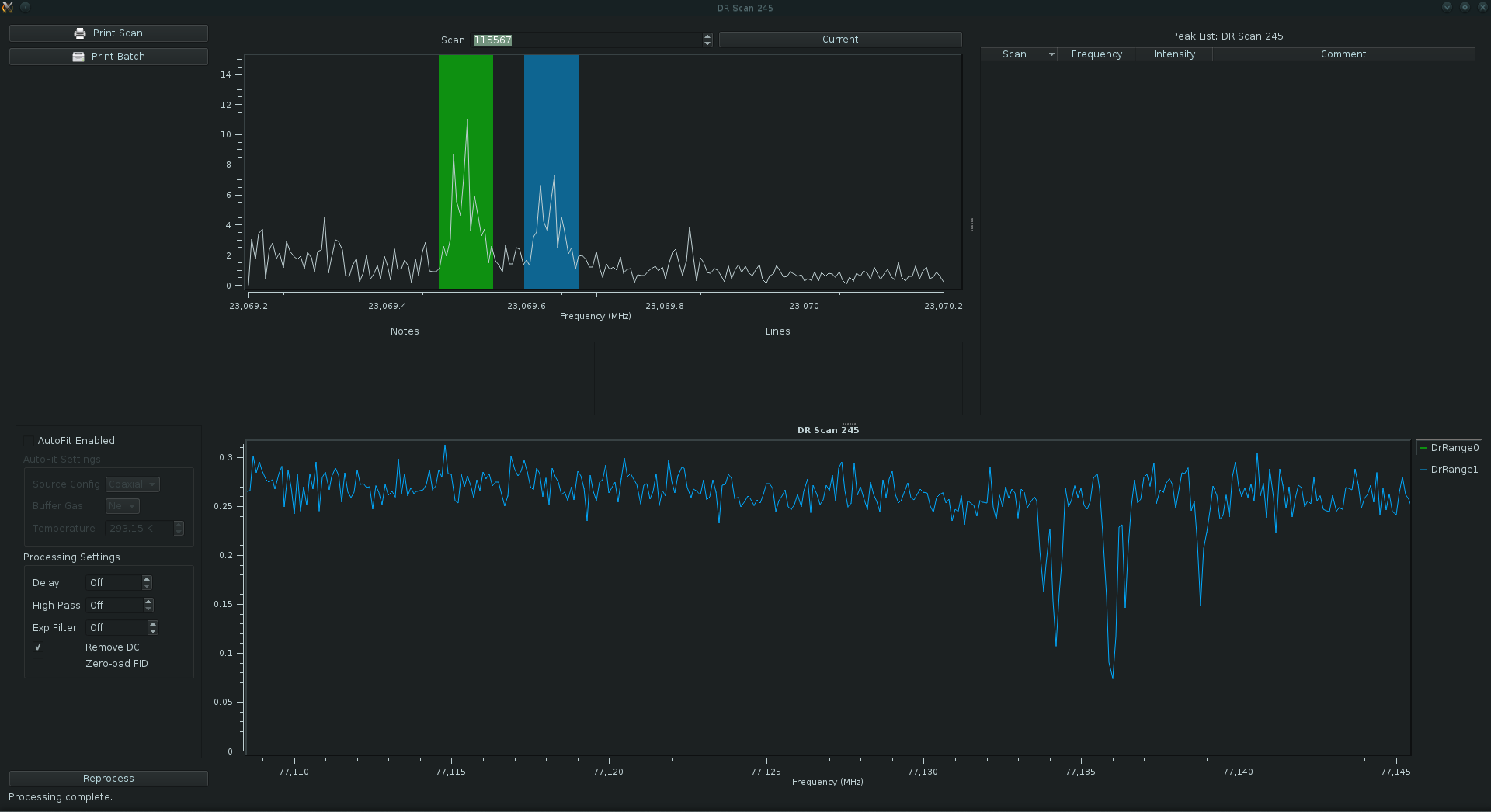
The FID (top) and resulting FT (bottom) spectra are visible.
[Clic on the image to enlarge]
Find more about the software:
Microwave spectral taxonomy: A semi-automated combination of chirped-pulse and cavity Fourier-transform microwave spectroscopy. K. N. Crabtree, M. A. Martin-Drumel, G. G. Brown, S. A. Gaster, T. M. Hall, and M. C. McCarthy. The Journal of Chemical Physics 144, 124201 (2016)
Broadband Fourier transform microwave spectrometer in a buffer gas cell
Our cryogenic buffer gas cooling instrument operates between 12 and 26 GHz, with typical chirps being 100 MHz in bandwidth. Cryogenically cooled helium (4-7 K) enters the buffer gas cell at a constant flow rate, maintaining a density within the cell of about 1014 He atoms/cm3. Molecules introduced into the buffer gas cell are collisionally cooled by helium within approximately 1 ms, and remain in the cell for up to 15-20 ms of observation time.
The chirped pulse microwave diagnostics of the buffer gas chamber have comparable sensitivity to Fabry-Perot cavity spectrometers, but with a much broader bandwidth (typically 100 MHz). This is possible for several reasons: 1) cryogenic protection switches maintain a low system temperature of 30-35 K, in contrast to more than 300 K for cavity spectrometers; 2) with continuous molecular input, the repetition rate of the experiment is limited only by the deexcitation time of the molecules, approaching 50 kHz; and 3) pure samples can be directly injected into the cell, enabling much higher molecule densities to be observed per unit time when compared to the seeded supersonic expansion experiments (typically 0.1% sample in buffer gas). The buffer gas cell is unique in that liquids, solids, and mixtures can be directly injected into the cell, which enables a broad range of ex-situ chemistry conditions not possible in pulsed valve based experiments.
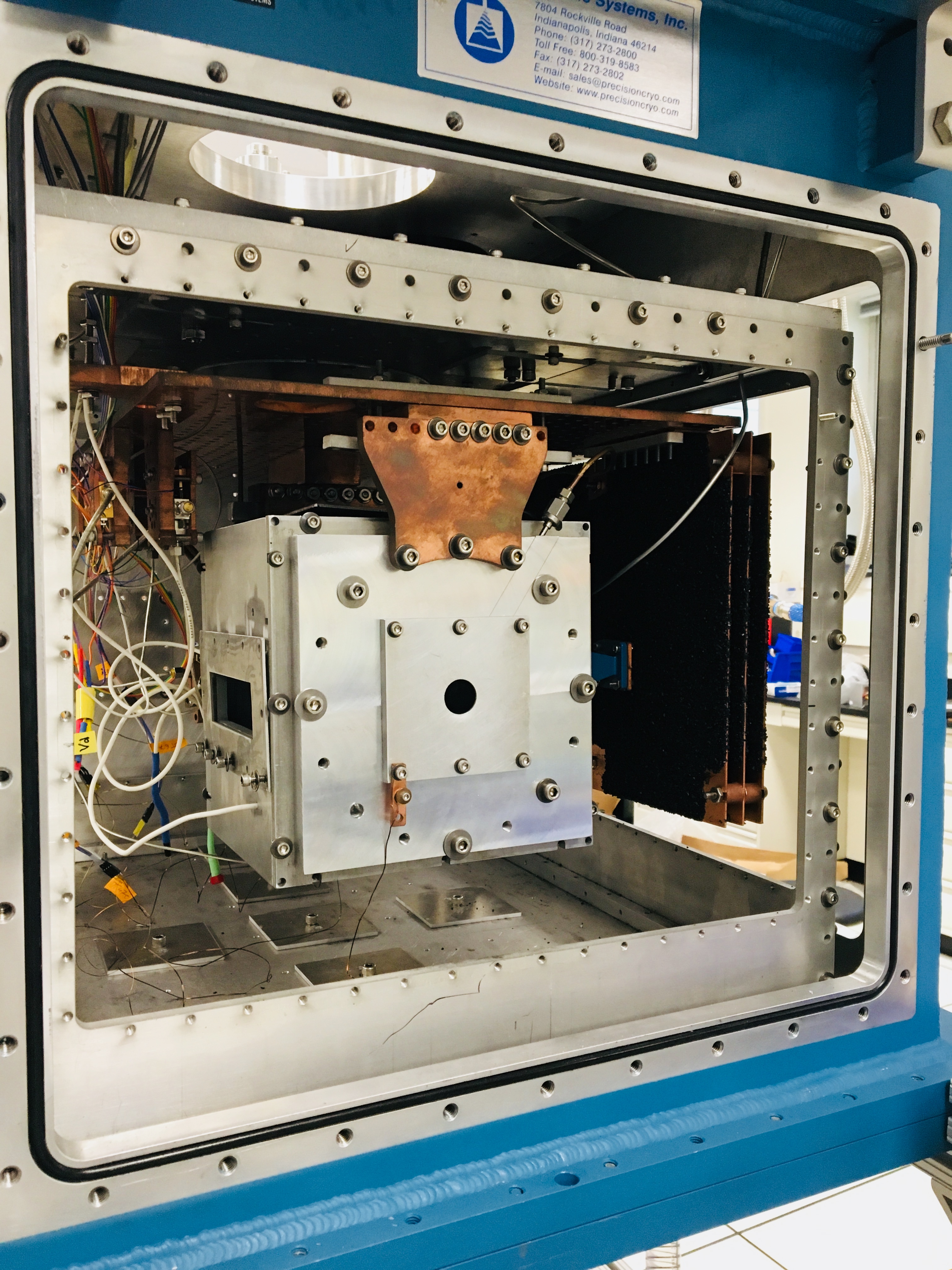
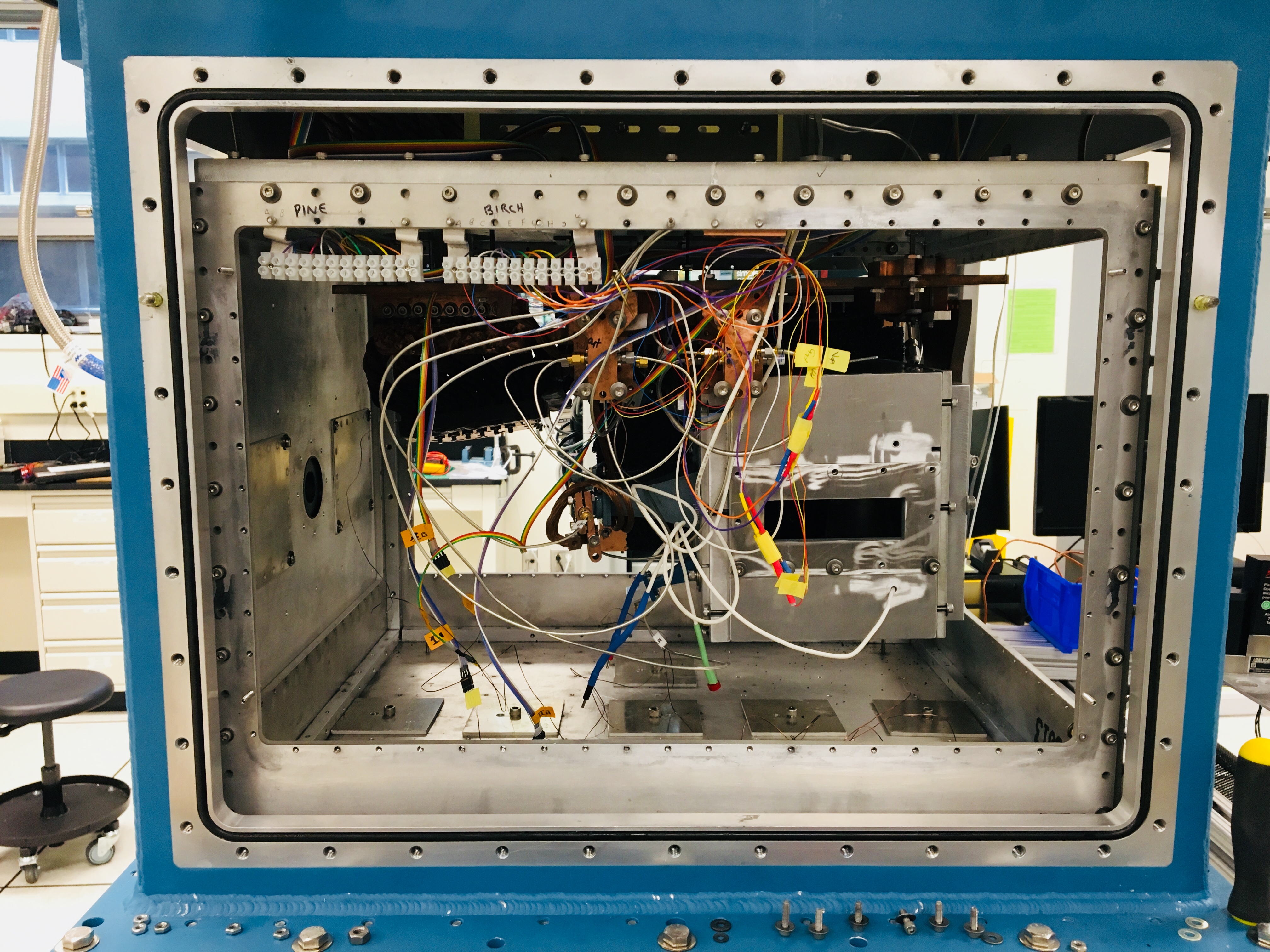
Find more about the instrument:
High sensitivity microwave spectroscopy in a cryogenic buffer gas cell. J. P. Porterfield, L. Satterthwaite, S. Eibenberger, D. Patterson, and M. C. McCarthy. Review of Scientific Instruments 90, 053104 (2019)
